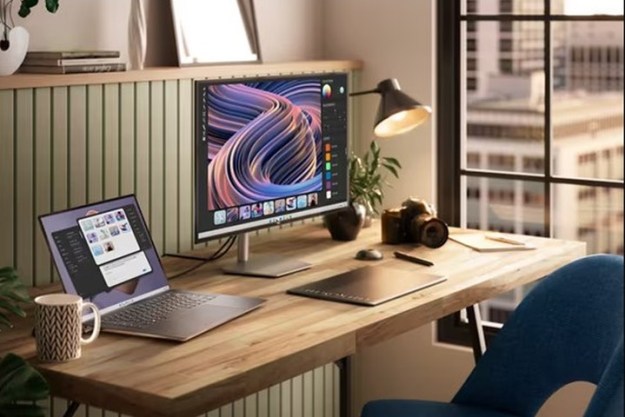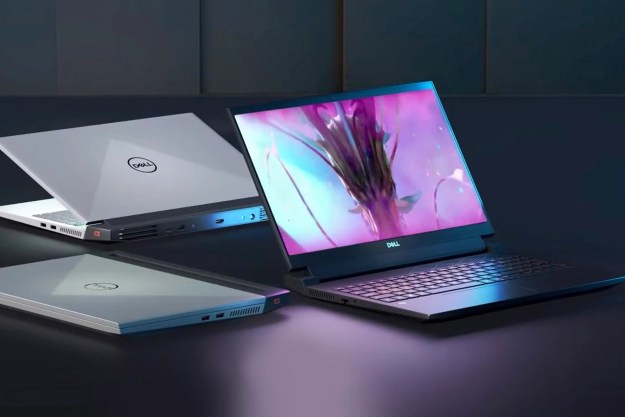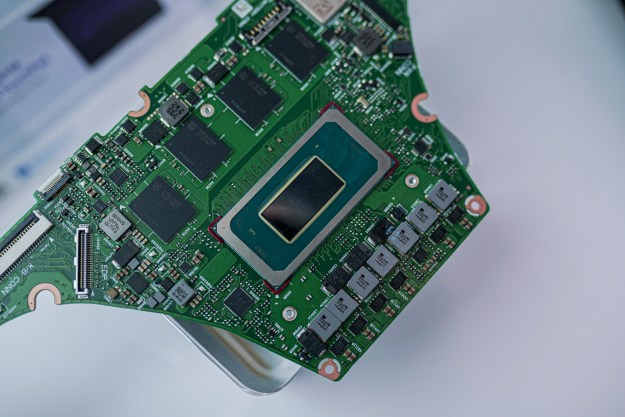Virtual reality is here to stay, but its adoption by mainstream culture will take much longer. We’ve seen the earliest signs of expansion beyond gamers and early adopters, but it hasn’t come from the big, highly capable headsets like the HTC Vive and Oculus Rift. Instead, it’s come from mobile VR. Samsung’s Gear VR and Google Cardboard are the most common VR headsets in the world.
Even VR goggles the size of sunglasses would be pointless without wireless.
This may seem strange, given that mobile VR isn’t as capable, but the history of technology includes many examples of hardware and software seeing mainstream adoption only after it became easy for everyone to use. The gaming industry exploded once home-consoles meant that people didn’t need to travel to arcades anymore, and smartphones needed to be built into a neat, iPhone-sized package before they took off.
Virtual reality could well be the same. Even though we can use it in our homes now, we need to go much further before your grandparents will call you in virtual reality. Today’s best VR headsets are an expensive, confusing set of wires. That of course limits its range, but more importantly, it makes headsets hard to understand. The advantage of wireless is not just freedom – it’s also ease of use.
Why wireless will set us free
TPCast has already shown off wireless capabilities with the HTC Vive, using a system we had a play with at CES. And Oculus has a working prototype that rids us of cables entirely.
With kits for the former expected to go on sale this year, and suggestions that the next-generation of Rift could well untether us from our PCs for good, the future of wireless virtual reality seems almost at hand.
Not having to worry about a cable improves immersion, and for those who are on the cutting edge of virtual reality gaming and development, that’s going to be the most exciting aspect of the TPCast. For the casual users, though, that’s a sideshow to what really matters – the fact adding wireless makes a headset much easier to use.
When you’re completely untethered from reality, you don’t have to be within a certain distance from the PC that powers it all. You don’t need to worry about keeping the cable behind you, nor do you need to keep track of whether you’ve turned about a bunch of times and therefore may be looping the cable around their feet. There’s no worry about if you have enough USB ports on your PC, or about where they should be plugged in.
Wireless operation also makes it easier for other people, animals, or children to move around in the same space as the wireless VR user, whether they are using a roomscale space or not.
These seem like minor considerations compared with the monumental leaps made in virtual reality in recent years, but they’re exactly the sort of considerations that will come into play for more casual home users.
Laying the groundwork for the future
The benefits of wireless will only increase as we make further advancements to the technology. There is little point in building a set of VR goggles that are as streamlined as a pair of sunglasses, for example, if you are still attached to your PC by a chunky cable. When you combine wireless connectivity with inside-out tracking, the potential for expanded VR environments explodes.
But without one or the other, neither of those technologies are as capable as the sum of their parts. We’ll need to see both (and more) become viable before VR takes its place as a mainstream technology.
Smartphones, or their earliest versions, the personal digital assistants (PDA) were around for well over a decade before they caught on as a mainstream piece of technology, that today, just about everyone owns.
VR must be easily, instantly available to use.
It took smaller handsets, brighter and bigger screens, longer battery life and life-changing software before people saw the benefit of carrying around a powerful computer in their pocket.
And, perhaps most importantly – wireless connectivity. Palm Pilots were useful, but syncing them to share data with other devices was a major pain. It meant keeping track of extra cables, and extra software.
While anyone can be wowed by a technology, to make people want it enough to buy themselves, it can’t be overly complicated. PDA functions only became appealing to everyone when they were available to use wirelessly, from anywhere, over a network.
Virtual reality is similar. We need the software, the infrastructure, the support and most importantly, wireless connectivity. It needs to be more than amazing, as this first generation of headsets certainly. VR must be easily, instantly available to use.
Wireless headsets take us one step closer to that.




